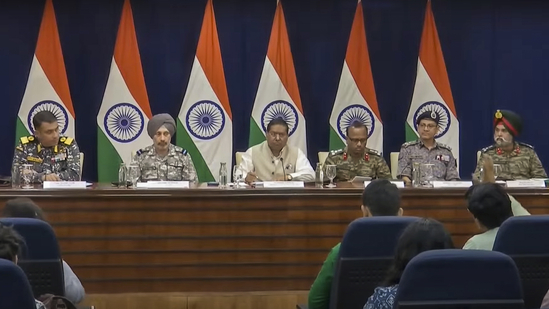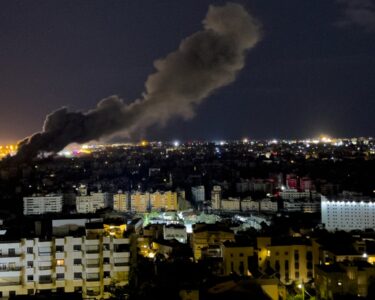In a dramatic escalation of the India-Pakistan conflict in 2025, the Indian government launched Operation Sindoor, a strategic counter-strike aimed at neutralizing cross-border threats following Pakistan’s intensified shelling and drone strikes. The operation, confirmed by the Ministry of External Affairs (MEA) on Friday evening, comes just hours after Pakistani forces fired artillery into Indian territory, killing one woman and injuring four civilians.
The LoC (Line of Control) remains tense as the Indian defence forces remain on high alert, and the global community watches closely, urging both nations to de-escalate.
Civilian Casualties and Drone Threats: What Triggered the Operation?
The immediate trigger for Operation Sindoor appears to be Thursday night’s shelling by Pakistan across several sectors in Jammu and Kashmir. One civilian woman was killed when her vehicle was struck by a shell near the LoC. Her three family members, who were traveling with her, sustained injuries. In another incident, a civilian in Uri’s Thajal village was injured when a residential structure was hit.
Simultaneously, air raid sirens were sounded in Chandigarh early Friday morning after suspected drone movements were detected over key border areas. According to official sources, several drones and missiles launched from across the border were intercepted mid-air by India’s advanced defence systems. Blackouts were enforced across parts of Jammu & Kashmir, Rajasthan, and Punjab as a preventive measure.
These events significantly raised tensions and prompted India’s military and diplomatic response.
MEA Briefing on Operation Sindoor: “Targeted and Measured Response”
At a press conference held in New Delhi, senior officials of the MEA—including Foreign Secretary Vikram Misri, Wing Commander Vyomika Singh, and Colonel Sofiya Qureshi—offered clarity on the purpose and scope of Operation Sindoor.
“India will not tolerate cross-border terrorism or aggression. Operation Sindoor was launched to eliminate imminent threats and protect our civilians,” stated Colonel Qureshi.
According to the MEA, the operation targeted specific terror launchpads and suspected drone command hubs along the LoC using high-precision air and artillery strikes. Indian officials emphasized that the action was “defensive in nature” and conducted in accordance with international norms.
US Intervention: Secretary Rubio Calls for De-escalation
In the wake of rising regional tensions, US Secretary of State Marco Rubio spoke separately with India’s External Affairs Minister S. Jaishankar and Pakistan Prime Minister Shehbaz Sharif, urging both sides to exercise restraint and engage diplomatically.
Rubio reportedly asked Islamabad to take “concrete and verifiable steps” to dismantle terrorist infrastructure operating within its borders. Jaishankar later took to social media, saying:
“Deeply appreciate US commitment to work with India in the fight against terrorism. Underlined India’s targeted and measured response to cross-border terrorism. Will firmly counter any attempts at escalation.”
These statements reflect a growing global concern about stability in South Asia, especially given the nuclear capabilities of both nations.
Historical Context: A Volatile and Complex Relationship
India and Pakistan have shared a long and often hostile history, particularly over the Kashmir region. Although 2021’s ceasefire agreement had brought a temporary lull, border violations and infiltration attempts have continued sporadically. The use of drones in recent years has added a new layer to the conflict, enabling more covert and unpredictable attacks.
The name “Sindoor”—which symbolizes protection and marital sanctity in Indian culture—appears to be a symbolic nod to the loss of civilian life, especially the woman who died in the recent shelling.
Security Measures in Border States: Public Advisory Issued
In response to the heightened threat level, authorities in Jammu and Kashmir, Punjab, and Rajasthan have stepped up surveillance. Drone detection grids, radar units, and anti-missile defence systems have been deployed extensively. Schools near border areas have been shut down temporarily, and emergency advisories have been issued urging civilians to stay indoors.
The Indian Air Force is reportedly conducting continuous reconnaissance missions, while ground forces remain on standby for any further escalations.
Outlook: Will Diplomacy Prevail or Will Tensions Escalate?
As India asserts its right to defend against cross-border terrorism, and Pakistan warns of “serious consequences” for Indian military actions, the world waits anxiously. The coming days will be crucial for backchannel diplomacy and international mediation efforts.
While India maintains that its response was limited and calibrated, the possibility of continued military engagements cannot be ruled out unless both countries return to the negotiation table.
Final Thoughts
Operation Sindoor marks a significant turning point in the 2025 India-Pakistan conflict, showcasing India’s preparedness and willingness to act decisively in the face of provocation. With international eyes on South Asia, the focus now must shift to long-term peace-building efforts that go beyond the battlefield.





